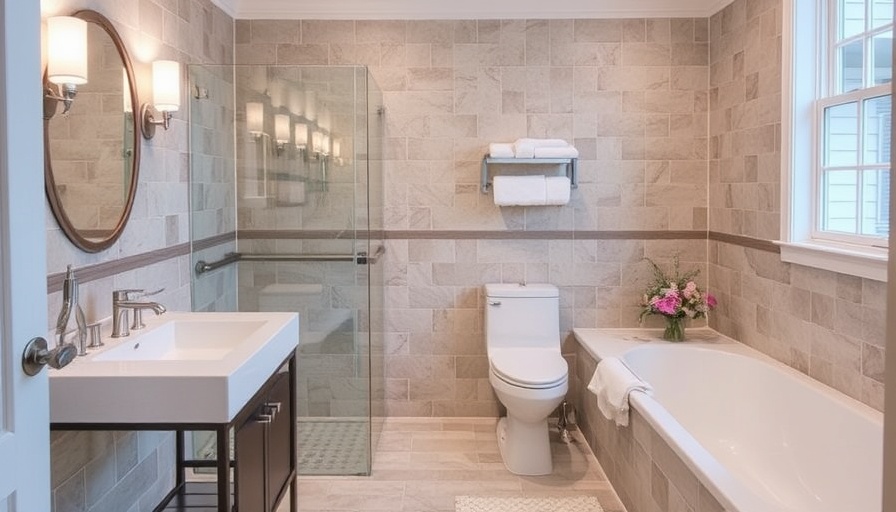
Rethinking Bathroom Spaces for Aging Residents
As the population continues to age, the conversation surrounding home renovations shifts towards creating spaces that cater to comfort, accessibility, and safety. The bathroom stands out as a pivotal area within the home that requires thoughtful consideration during renovations, especially for aging in place. It is essential to recognize that as individuals age, the need for security during daily routines, particularly in bathrooms, becomes critical.
Universal Access: Designing with Intent
Universal design principles emphasize creating spaces that are accessible to everyone, regardless of physical ability. For bathrooms, this could mean installing walk-in bathtubs or showers equipped with grab bars, ensuring easy access for seniors and reducing the risk of slips and falls. Additionally, adjustable showerheads and supports for sitting can render the bathing experience significantly safer and more comfortable.
Mobility Solutions: Essential Features in Bathroom Renovations
Incorporating mobility-friendly features into bathroom designs promotes independence. Low-threshold showers can replace traditional bathtubs, while efficient toilet heights can minimize the strain during use. These adjustments are not merely beneficial; they significantly enhance the overall experience of using the bathroom for those with limited mobility. The implementation of slip-resistant flooring is another crucial aspect, protecting against falls and ensuring a safe environment.
Comfort in Design: More Than Just Functionality
The emotional well-being of seniors is as important as physical safety. Therefore, choosing soothing color palettes and natural lighting can improve mood and create a calm atmosphere. Planting considerations should also include ventilation options to reduce humidity—a common concern in bathrooms—and to eliminate mold buildup. Such measures not only enhance safety but also contribute to a more pleasant bathing experience.
Eco-Friendly Choices: Sustainable Bathroom Updates
Integrating eco-friendly materials into bathroom renovations presents dual benefits—environmental responsibility and improved safety. For instance, bamboo flooring offers resilience against moisture while being less slippery compared to traditional tiles. Furthermore, water-saving fixtures can reduce bills and conserve resources, aligning with sustainable living practices. Incorporating such materials also assures homeowners that their renovations are contributing positively to their welfare and the environment.
Future Trends: What's Next in Aging-In-Place Renovations
With technology advancing, the future of bathroom renovations for aging in place looks promising. Smart home technology is making it easier to customize environments for safety. Motion-sensor lights, automatic faucets, and voice-activated features are just some advancements that provide convenience and safety, allowing seniors to maintain their independence while living comfortably.
Conclusion: The Importance of Thoughtful Renovations
For homeowners in London, the way forward in bathroom renovations lies in foresight and intentionality. As you consider renovations for aging in place, recognize the profound impact these changes will have—not just on safety and accessibility, but on overall quality of life. By prioritizing both function and design, individuals can create bathrooms that offer both independence and comfort, allowing seniors to thrive in their homes. As this renovation trend continues to grow, integrating eco-friendly materials and smart technologies will ensure that these spaces evolve alongside the needs of their users.
 Add Row
Add Row  Add
Add 




Write A Comment